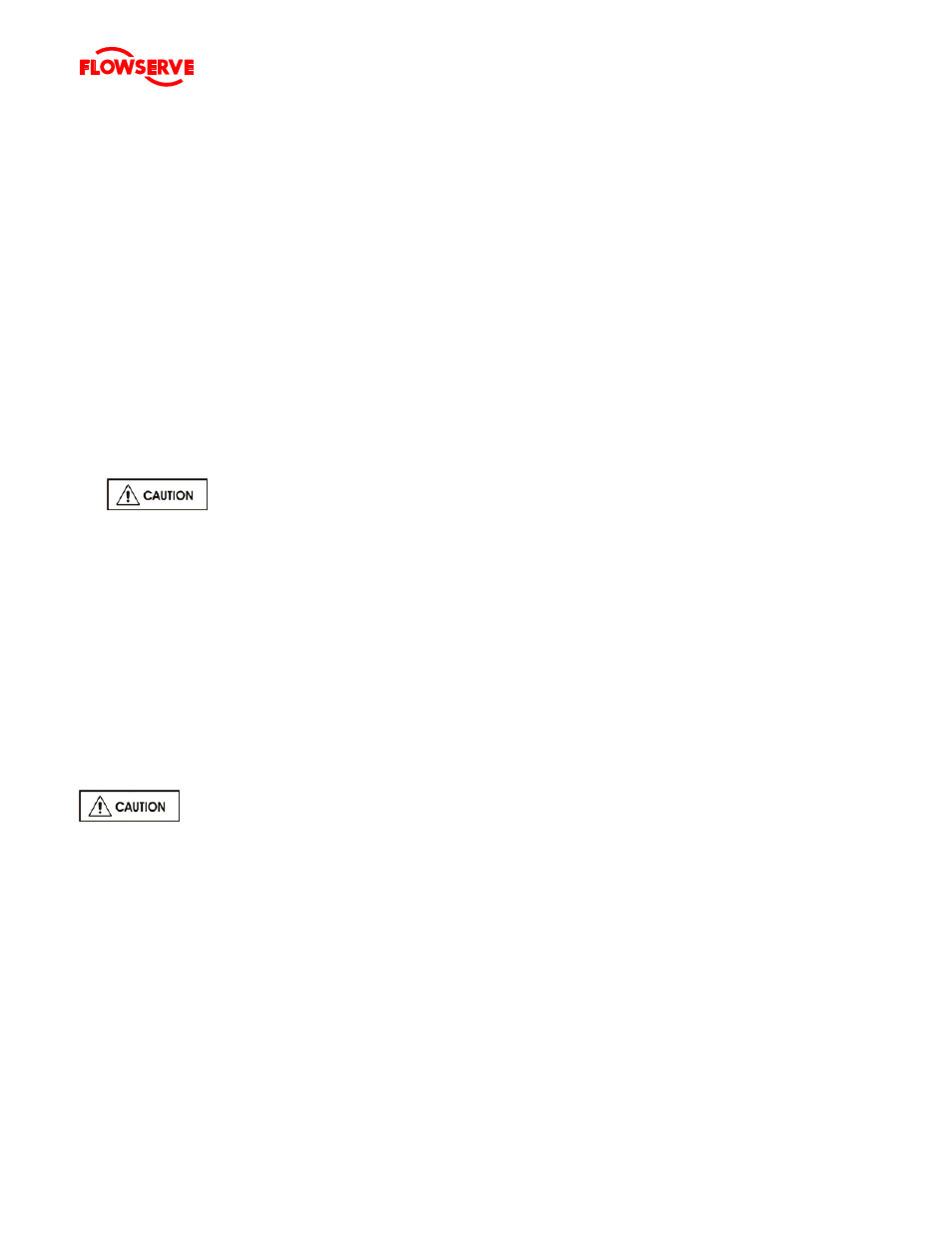Flowserve Twin Screw Rotary User Manual
Page 37

TWIN SCREW PUMPS. ORIGINAL USER INSTRUCTIONS. ENGLISH. 71569243 – 07/10
Page 34 of 53
®
a) Check operating behaviour. Ensure noise,
vibration and bearing temperatures are normal.
b) Check that there are no abnormal fluid or
lubricant leaks (static and dynamic seals) and
that any sealant systems (if fitted) are full and
operating normally.
c) Check that shaft seal leaks are within acceptable
limits.
d) Check the level and condition of oil lubricant. On
grease lubricated pumps, check running hours
since last recharge of grease or complete grease
change.
e) Check any auxiliary supplies eg heating/cooling
(if fitted) are functioning correctly.
Refer to the manuals of any associated
equipment for routine checks needed.
6.2.2 Periodic inspection (six monthly)
a)
Check foundation bolts for
security of attachment and corrosion.
b) Check pump running records for hourly usage to
determine if bearing lubricant requires changing.
c) The coupling should be checked for correct
alignment and worn driving elements.
Refer to the manuals of any associated
equipment for periodic checks needed.
6.2.3 Re-lubrication
Lubricant and bearing temperature analysis can be
useful in optimizing lubricant change intervals. In
general however, the following is recommended.
6.2.3.1 Oil lubrication
Maintaining the correct oil level is very
important.
If the pump is supplied with a constant level oiler the
oil level will be automatically maintained and as long
as oil is visible in the glass bottle there is no need to
refill. If however a sight glass has been fitted then
regular checks should be made to ensure the level is
maintained at the centre of the glass window.
Refer to section 5.2.2 for methods of oil fill and 5.2.5
Lubrication schedule for external bearing pump for
the schedule and temperature limits.
6.2.4 Mechanical seals
No adjustment is possible. When leakage reaches
an unacceptable level the seal will need replacement.
6.2.5 Gland packing
The stuffing box split gland can be completely
removed for re-packing or to enable the addition of
extra rings of packing.
The stuffing box is normally supplied with a lantern
ring to enable a clean or pressurised flush to the
centre of the packing. If not required, this can be
replaced by an extra two rings of packing.
To re-pack the stuffing box, remove the gland, the old
packing and the lantern ring (if applicable). Ensure
that all packing has been removed and that the
stuffing box bore and shaft are clean and free of
foreign material. If the shaft is worn or scored it
should be repaired or replaced. On new units ensure
that the lantern ring is not installed in the bottom of
the stuffing box.
The use of precut die-moulded or mandrel-cut
packing is recommended. Make sure that the
packing to be installed is the correct grade and size.
If in doubt, contact Flowserve or a reputable packing
manufacturer.
When inserting packing always insert one ring at a
time. Note that preformed packing rings should not
be pulled straight apart. Instead the rings should be
twisted sideways enough to get them around the
shaft. Use the gland to push packing squarely into
the box. Stagger the rings so that the joints are
approximately 90 degrees apart.
Ensure that the lantern ring is aligned with the
appropriate inlet/outlet ports and that the shaft can
rotate by hand.
When installing the gland, tighten the gland nuts only
finger tight. There must always be a small leakage,
normally a minimum of 120 drops per minute to
atmosphere to lubricate and cool the packing is
required.
6.3 Spare parts
6.3.1 Ordering of spares
Flowserve keep records of all pumps that have been
supplied. When ordering spares the following
information should be quoted:
1) Pump serial number
2) Pump
size
3) Part name – taken from section 8
4) Part number – taken from section 8
5) Number of parts required
